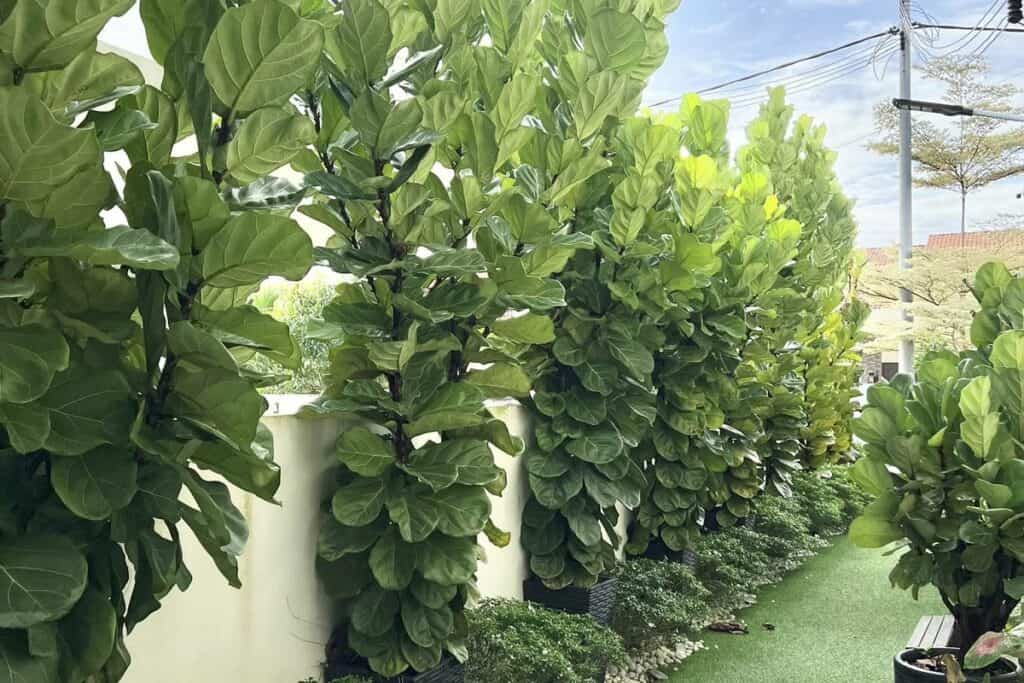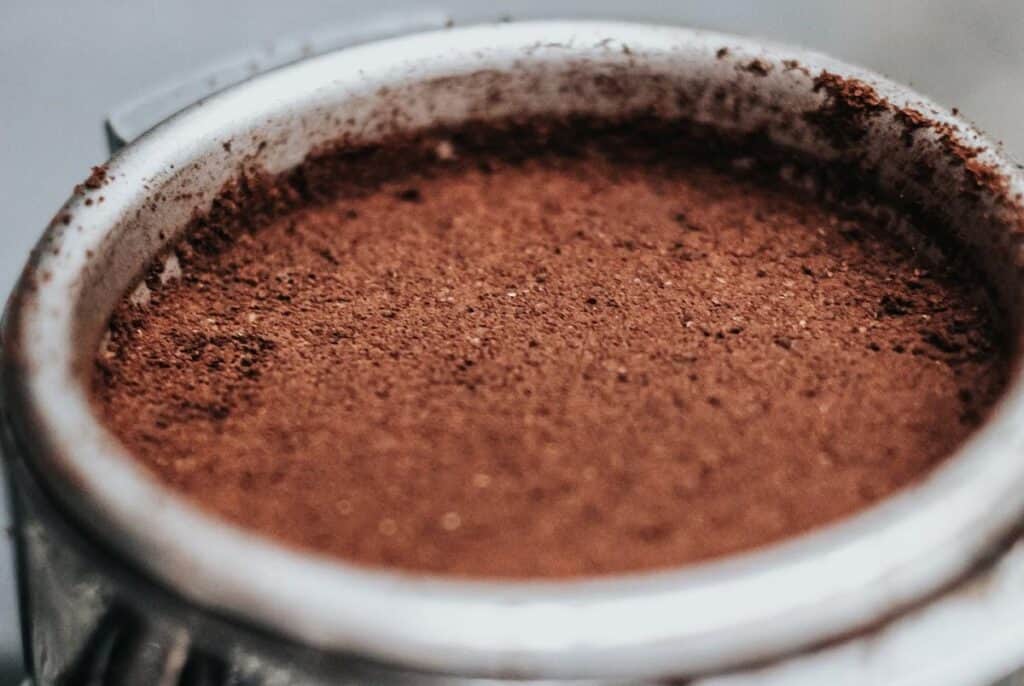Do you love your fiddle leaf fig but can’t seem to keep it alive and thriving? Have you heard that adding coffee grounds to the soil can help your fiddle leaf fig thrive, but are unsure if that is true? If you have asked yourself these questions, you are not alone. Many plant owners are looking for the answer to the question “Do Fiddle Leaf Figs Like Coffee Grounds?”
In this article, we will explore the potential benefits of using coffee grounds on fiddle leaf figs, as well as the potential risks. We will also look at other alternatives to using coffee grounds, such as mulch, compost, and fertilizer. Finally, we will look at how to incorporate these materials into your fiddle leaf fig’s potting soil. So, grab your favorite cup of coffee, and let’s get started!

Contents
- 1 Do Fiddle Leaf Figs Like Coffee Grounds?
- 2 Benefits Of Coffee Grounds To Fiddle Leaf Fig
- 3 How To Use Coffee Grounds For Fiddle Leaf Figs
- 4 Potential Risks Of Using Coffee Grounds For Fiddle Leaf Figs
- 5 What Kind Of Coffee Grounds To Use For Fiddle Leaf Fig?
- 6 How Often To Add Coffee Grounds To Fiddle Leaf Fig?
- 7 How Much Coffee Grounds To Add To Fiddle Leaf Fig?
- 8 Frequently Asked Questions
- 9 Conclusion
Do Fiddle Leaf Figs Like Coffee Grounds?
Yes, fiddle leaf figs enjoy a small amount of coffee grounds in their soil because of the nitrogen-rich content of the grounds. Coffee grounds also provide a slow, steady release of nitrogen, which is an essential nutrient for fiddle leaf figs, helping to promote healthy growth and leaf production.
Additionally, coffee grounds help to reduce the acidity of the soil, which can be beneficial for fiddle leaf figs, as they prefer slightly acidic soil. Coffee grounds also help to retain moisture in the soil, aiding in the prevention of root rot. Finally, coffee grounds can help to aerate the soil, allowing oxygen to reach the roots of the fiddle leaf fig and promoting healthy root growth.
Benefits Of Coffee Grounds To Fiddle Leaf Fig

Coffee grounds can be beneficial to a Fiddle Leaf Fig plant’s soil by providing valuable nutrients and improving the soil’s structure. Coffee grounds contain nitrogen, phosphorus, potassium, and several other minerals that are beneficial to a Fiddle Leaf Fig’s health. Adding these nutrients to the soil can improve the overall health and growth of the plant.
Coffee grounds can also help to improve the soil structure. The grounds are a natural source of organic matter. This can help to improve the soil’s aeration and drainage, allowing for more oxygen and water to reach the plant’s roots. This can help to promote healthy root growth, which is essential for optimal plant growth.
Coffee grounds can also be used to deter pests. The acidic nature of the grounds can help to keep away pests such as slugs and snails. This can help to reduce the need to use chemical pesticides, which can be harmful to the plant’s health.
Finally, coffee grounds can be used to improve the soil’s pH balance. The grounds are slightly acidic, which can help to lower the pH of the soil. This can help to create an environment that is more suitable for the Fiddle Leaf Fig, as the plant prefers soil with a slightly acidic pH.
Overall, adding coffee grounds to Fiddle Leaf Fig soil can be beneficial in a variety of ways. The grounds provide valuable nutrients and organic matter, which can help to promote healthy plant growth. Additionally, the grounds can help to deter pests and improve the soil’s pH balance, creating a better environment for the plant to thrive in.
How To Use Coffee Grounds For Fiddle Leaf Figs
Using coffee grounds for Fiddle Leaf Figs (FLFs) is a great way to give them the nutrients they need to thrive. Coffee grounds also help increase acidity in the soil, which can be beneficial for these finicky plants. Here are some tips on how to use coffee grounds for FLFs:
First, it’s important to remember that coffee grounds should be used sparingly. Too much can cause the soil to become too acidic and can be detrimental to the plant. A tablespoon or two of grounds per pot is a good amount to start with.
Coffee grounds can be used as soil amendments, adding it to the potting mix when you’re planting your FLF. You can also sprinkle it on the top of the soil and mix it in. It’s also a good idea to add some compost or other organic matter to the mix, as this will help keep the soil balanced.
Finally, you can create a “tea” out of the coffee grounds and water to use as a fertilizer. To do this, simply steep a tablespoon or two of grounds in a quart of water for a few hours, then strain the grounds and water the FLF with the liquid. This can be done every few months to give your FLF a boost of nutrients.
By following these tips, you’ll be able to use coffee grounds to help your Fiddle Leaf Figs thrive. Just remember to use them sparingly and add other organic matter to the soil to keep it balanced.

Potential Risks Of Using Coffee Grounds For Fiddle Leaf Figs
Using coffee grounds on your fiddle leaf figs could potentially cause some harm to the plants. Coffee grounds can be quite acidic, and the pH level of the soil in which the figs are planted can be thrown off balance if too much is added. This can cause the plant to become stressed and unhealthy, as it cannot absorb the nutrients it needs from the soil.
In addition, coffee grounds are often damp and can cause mold and mildew to form on the soil, which can be detrimental to the health of the fiddle leaf fig. The grounds should be used in moderation and allowed to dry out before they are placed in the soil.
Finally, coffee grounds can also inhibit the growth of beneficial microorganisms in the soil, which are essential to the health of the plant. If too much is used, the beneficial microorganisms may be unable to survive. It is important to use coffee grounds sparingly and to monitor the soil pH levels to ensure no damage is caused to the fiddle leaf fig.
What Kind Of Coffee Grounds To Use For Fiddle Leaf Fig?
When it comes to caring for your fiddle leaf fig, you may be wondering if coffee grounds can help. The answer is yes, but you need to be aware of what kind of coffee grounds to use.
First, you should avoid using flavored coffee grounds. Fiddle leaf figs are sensitive plants, and the additives in flavored coffee grounds can cause the plant to become sick. Stick with plain, unflavored coffee grounds to ensure your plant’s health.
Related Post:
How To Propagate Fiddle Leaf Fig Successfully
How Often To Add Coffee Grounds To Fiddle Leaf Fig?
When it comes to adding coffee grounds to the soil of your fiddle leaf fig, it is important to be mindful of how often you do it. Too much of a good thing can be a bad thing and when it comes to coffee grounds, that is certainly the case.
In general, it is recommended that you only add coffee grounds to the soil of your fiddle leaf fig once every three to four months. This should be enough to provide the plant with the additional nitrogen it needs, without overloading the soil. When adding the coffee grounds, be sure to spread them evenly throughout the soil and mix them in well.
How Much Coffee Grounds To Add To Fiddle Leaf Fig?
The general recommendation is to use one tablespoon of coffee grounds per gallon of potting soil. However, it’s best to start with a smaller amount, such as a teaspoon or two, and then increase the amount as needed.
It’s important to note that coffee grounds can be acidic, so be sure to check the pH of the soil before adding them. If the pH is too low, it could be harmful to the plant. It’s also important to remember to mix the coffee grounds into the soil thoroughly, as an uneven distribution could lead to nutrient deficiencies.
Finally, it’s important to remember that coffee grounds should not be the only source of nutrition for your fiddle leaf fig. They should be used in conjunction with other fertilizers, such as compost or fish emulsion, to ensure that the plant is getting all the nutrients it needs to thrive.
Related Post:
Leaning Fiddle Leaf Fig (8 Causes & Solutions)
Frequently Asked Questions

Will adding coffee grounds to the soil of a Fiddle Leaf Fig help it grow?
Adding coffee grounds to the soil of a fiddle leaf fig can help with its growth, but it should be done in moderation. Coffee grounds are a great source of nitrogen, which is an essential nutrient in the soil. This helps to promote healthy roots and leaf growth. However, coffee grounds are also acidic and can increase the acidity of the soil, which can be a problem for fiddle leaf figs.
It’s important to be aware of the pH level of the soil before adding coffee grounds. Fiddle leaf figs prefer soil with a pH of 6.5 to 7.5, so it’s best to test the soil pH first. If the pH is too low, adding coffee grounds could worsen the problem. If the pH is too high, adding coffee grounds can help to balance it out.
It’s also important to be aware of the amount of coffee grounds added. Too much can be harmful as it can change the soil composition in drastic ways and cause root burn. A good amount to aim for is one to two tablespoons per gallon of soil.
What other soil amendments can be used For Fiddle Leaf Figs?
When growing fiddle leaf figs, it is important to provide them with the right soil amendments. There are a number of amendments that can be used to ensure that your fiddle leaf figs are getting the nutrients and moisture they need.
One soil amendment that can be used is compost. Compost is a great way to add organic matter to the soil and it also helps to improve drainage. Additionally, compost helps to retain moisture and can provide extra nutrients to the soil.
Another amendment that can be used is perlite. Perlite is a lightweight soil amendment that helps to improve aeration and drainage. Additionally, it helps to keep the soil from becoming too compact.
Finally, peat moss can also be used. Peat moss helps to hold the moisture in the soil, making it less likely to dry out. Additionally, it helps to improve the structure of the soil, making it easier for roots to penetrate.
Conclusion
In conclusion, while there is no definitive answer to whether or not fiddle leaf figs like coffee grounds, the consensus appears to be that they may benefit from small amounts of coffee grounds. Ultimately, the best thing to do is to experiment with different amounts of coffee grounds and observe how your fiddle leaf figs respond. With patience and careful observation, you should be able to determine what works best for your plants.
